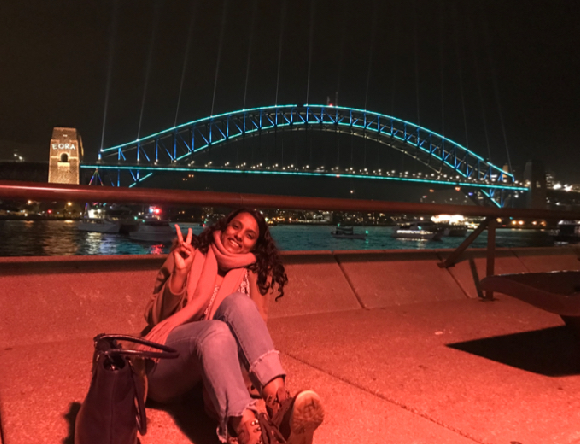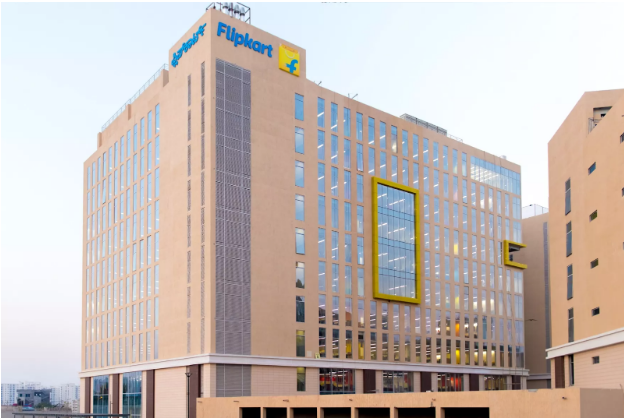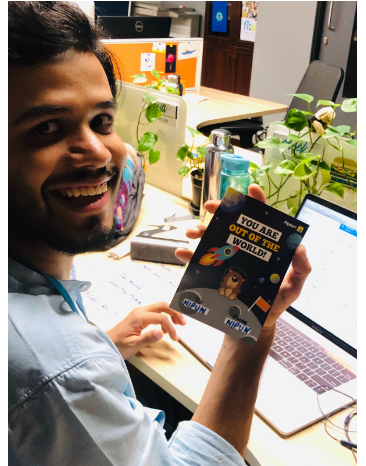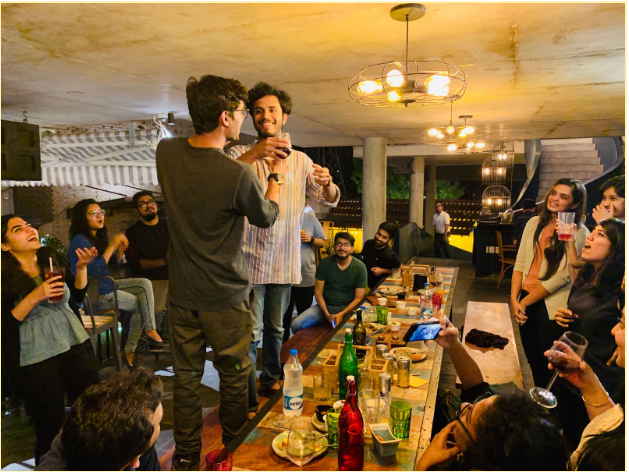

Body of IITR

A week after I joined Flipkart as a design intern, I entered a conference room where the user research team was sharing their insights on a study they conducted for the next hundred million users, who are not the usual tech-savvy users, consumers that are not part of the millennials or Gen-Z demographic. To understand why they do not shop online, the team conducted a year long study on a single emotion - Trust. I was overwhelmed by the amount of effort the whole team puts in to understand a single human emotion out of the dozen emotions which stopped them from shopping online. I knew at that time that the organisation is pursuing design at its core. I knew at that moment that I would get to learn and work with a lot of brilliant minds in the upcoming three months.
I joined Flipkart in the Product Design team for the summers through an on-campus internship. I was never the ‘on-campus intern’ guy in college, since there are a very few companies which come to campus to hire designers. But in the past 3-4 years, design culture in IIT-R has seen exponential growth, and designers working in the industry have also noticed this trend about ‘Roorkee Design’ so a few companies have started to hire on-campus as well. I initially applied at Flipkart for an internship off-campus, they considered my case and took it forward. I waited for a month (not that unusual when you are applying off-campus) to know the status of my application and eventually lost hope of ever hearing back. But one day I got a call from a IIT-R alum who is working at Flipkart as a Product Designer. He told me that the management has decided to come to campus for hiring, given the large number of applications from IIT-R for both full time and intern roles. The hiring process started just a few days before end-term examination (to all those who get sad if they do not get an intern in the peak intern season when all companies come to campus - please sit back, do your work and have some patience), the whole process took almost two weeks. They shortlisted students based on their portfolios and the shortlisted candidates were given a design assignment that they were supposed to do in a limited time. On the basis of design submissions, they picked two students from our campus. There was a small informal interview after that, and we were in!
The role ‘Product Design’ might seem a little ambiguous to some. And it is not their fault, since it is a constantly evolving field. Have you noticed how you experience different emotions when you are using Instagram as opposed to when you’re scrolling through Facebook? If yes, than the designers have done their jobs well. Product design at tech-organisations is more inclined towards digital product design or designing experience for a product with digital touchpoints. It is about understanding the needs and constraints of users, business, and technology, which then forms the basis for designing an optimal experience for potential consumers of the product. If you want to pursue design as a career, start looking for the ‘why’ in everything, in every app you use from Snapchat to Linkedin. Think about why Snapchat looks the way it does. Why are you met with a camera when you open it? Try going through as many design books and articles as possible,since there isn’t really anyone on campus to teach and acquaint you with the industry standards. Try working on a real or concept project in collaboration with developers or people with business ideas in the campus. Or just look around and take a second to notice all the problems around you then pick one and think of what you can do for it.

Coming back to my internship experience, Flipkart Bangalore HQ has around 10,000 employees, and there are numerous teams to handle each and every part of Flipkart. I was working in the Product Design team under UAG (User Acquisition and Growth) segment of Flipkart. I was assigned in the user engagement and retention pod with a mentor and a manager for any help that I needed, and also an HR buddy whose role in my whole internship is still questionable except handling my relocation brilliantly.
My project at Flipkart was to design an end to end experience for one segment of Flipkart Travel which involved online ticket booking (I cannot tell you the specifics of the project because it has not been launched yet). Week one started with understanding first how Flipkart functions, what different products we have and how we are to approach design for different projects in a different manner. So during my first week there, most of my time was spent on ‘1 on 1 interviews’ with my peers and seniors, it taught me a lot about different design processes people use in the industry for different types of projects. At an organisation like Flipkart, it becomes essential to understand business and practical aspects of your design too. If you create a design that does not make profits but it has a good experience then it is no good for anyone. Then I started to understand how the travel industry works and what kind of people actually come to book a ticket online, what are their intents, what are their goals, how do they behave, how they see things. Before designing any product, it is really important to know everything about the people that you are designing for and the industry around it. If somebody asks you why you have used list-view instead of grid-view in your designs, you should have a good justification behind it, and that only comes when you know your product inside-out. I tried a few methods like ‘Survey Form’ to Flipkart customers to understand the demographics and traits of the users we are aiming at, and got really interesting insights out of it. ‘Competitor Analysis’ to know the current industry standards and use them to cut down time on research that has already been done. ‘1:1 interviews’ and ‘Recall sessions’ with users to know what problems they are facing in the current systems in place. ‘Card sorting’ to prioritise and group different elements in my designs. All these practices were relevant to my project and helped me, but it is not necessary to use these for each project. Every project at Flipkart has its own requirements and according to that you create your process.
By the end of my two month journey, My designs were done and ready for approval and feedback by the design team, iterating on the same, followed by approvals and feedback by the directors and senior directors of the company before the whole thing could be handed over to the developers, who would then push it into production. Being a designer, your job isn’t done when the designs are. You have to align all the stakeholder teams on the same page as you and your design research, to be in the loop with developers when they are developing your ideas, make sure that what you designed and what went live matches, it is not at all a desk job and is actually quite fun.
Coming to the fun part/work-life balance/work culture, whatever you associate it with. Flipkart is one of those huge corporates that still have a start-up-y vibe to their work environment (except when you have to take approvals, or when you have to manage your calendar everyday, or when you spend more time in meetings than actually working) But jokes apart, they have a really good working culture, it is fast-paced, you face new challenges on an individual and organisation level everyday. They don’t force you to work, or even come to office (unlimited work from home, yes) as long as you can keep up with deadlines. On day one I was asked what my expectations were, instead of forcing their expectations on me. During my induction, they took to me warehouses to see how a product actually arrives at your doorstep. I had so many formal and informal outings with the team in two and a half months that it wasn’t easy to keep track.

Flipkart design has a very strong design team as of now with almost 30 people, and one of the best user-research teams in India too. For anyone who wants to learn about design research and conduct it by going to ground should try aiming for user researcher roles. For designers who are more inclined towards creating experiences hand to hand with business, go for product design role. For both of these roles you will need some hands on experience with a few college-time design projects. Projects which are not just designing screens but also involve social, business, human and tech aspects. Collaborate a lot, work a lot, practice a lot, observe a lot.